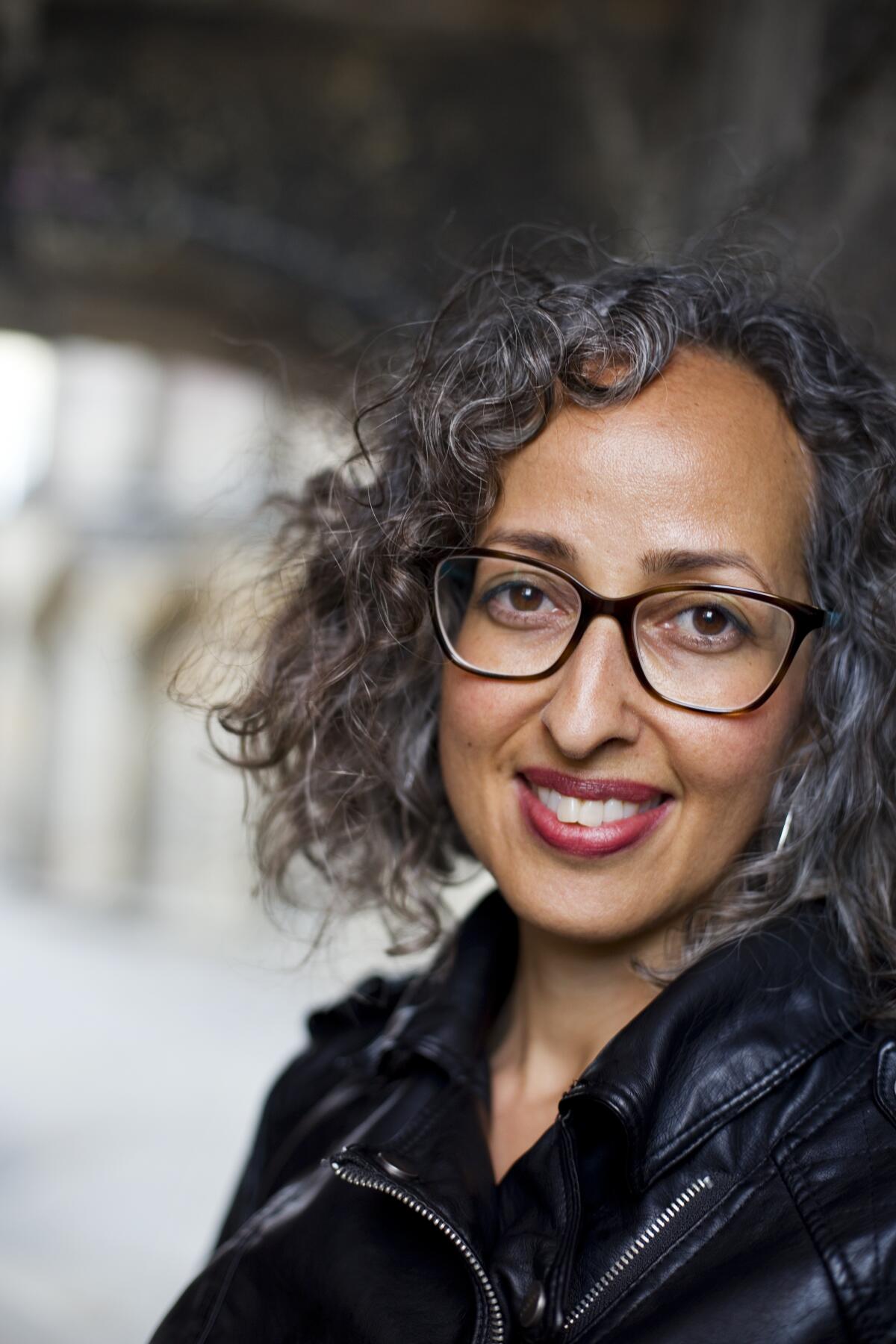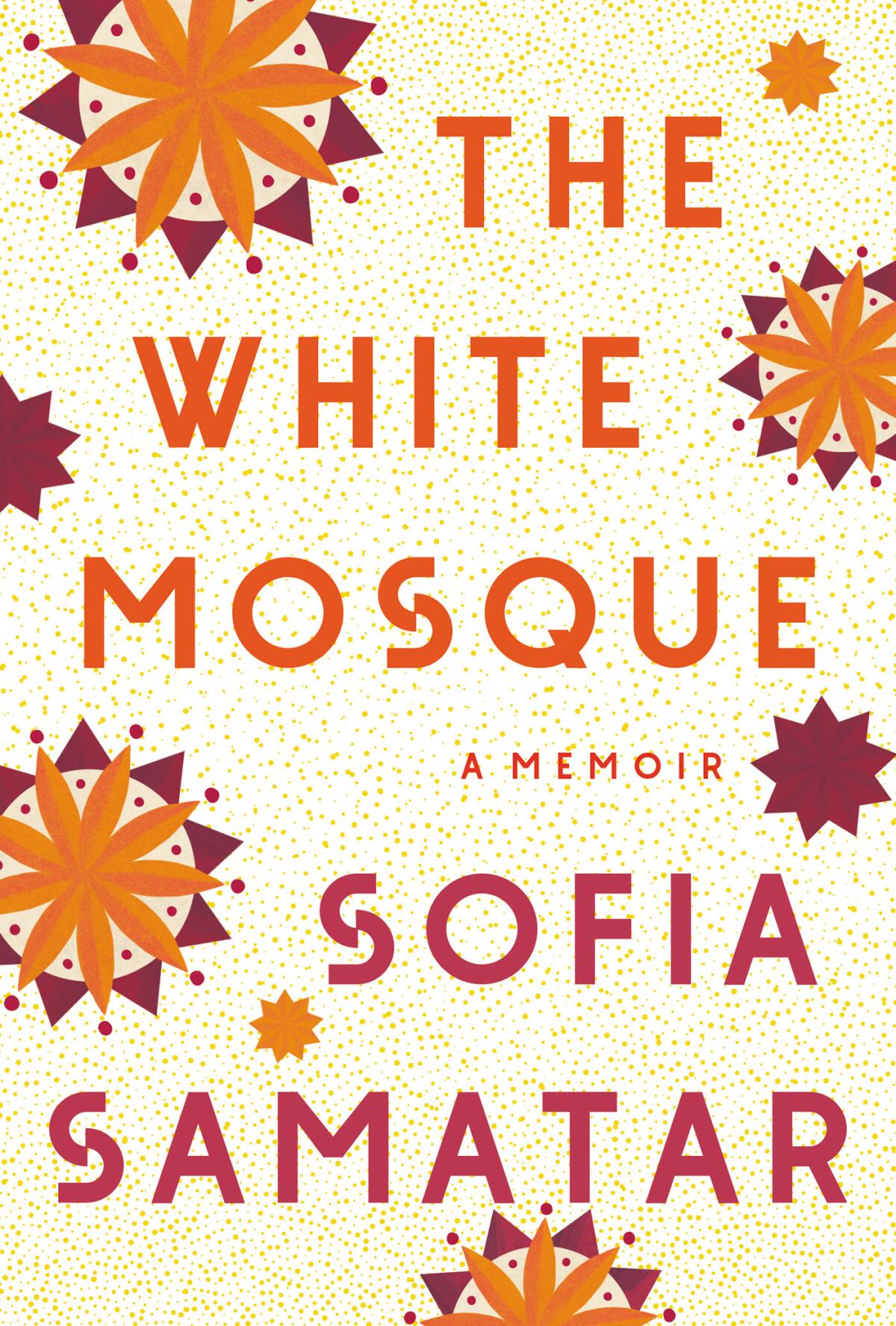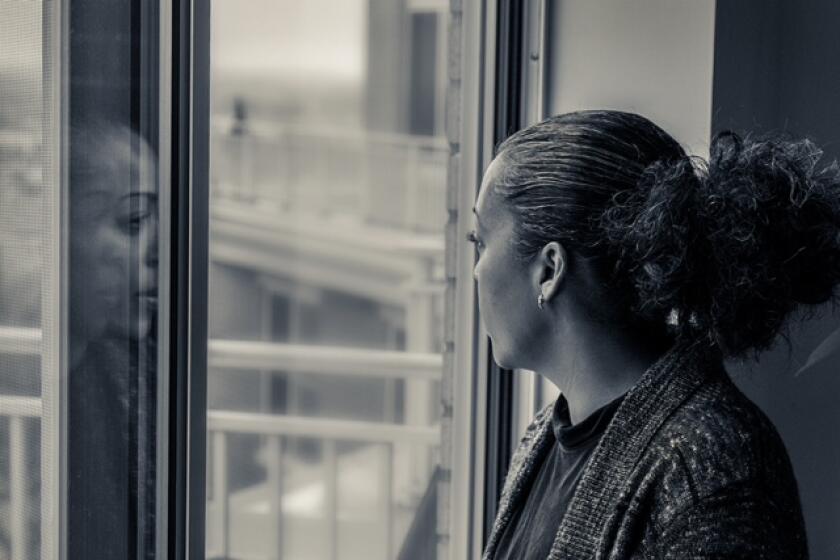Review: A “mixed” memoirist’s Silk Road travelogue becomes a road map to sanctuary

- Share via
On the Shelf
The White Mosque: A Memoir
By Sofia Samatar
Catapult: 336 pages, $27
If you buy books linked on our site, The Times may earn a commission from Bookshop.org, whose fees support independent bookstores.
Anyone writing a memoir wonders just what they’re up to, pulling together the scattered materials of experience and library work, but few express that struggle with the poetry of Sofia Samatar. She doesn’t merely admit to trouble with structure; she frets that the text is in “magpie condition,” all bits and pieces. Yet “The White Mosque,” out this week, sustains a sturdy and accessible outline. Its present action is a bus tour through Central Asia in 2016, following a pilgrimage most people would consider half-crazy. In the 1880s a wagon train of Dutch-German Mennonites, burning with millenarian fever, set out to meet Jesus on far side of the Caucasus.
This landscape still proves fascinating, if less of a threat than a century and half ago. Capitals like Tashkent and Samarkand offer histories both horrifying and rich, in which the Mennonite presence is one of the latest and strangest elements; just the sort of glittery mix irresistible to a magpie. The nest Samatar weaves includes some personal artifacts: “My mother’s family are Swiss-German Mennonites, my father’s Somali Muslims.”
This unusual relationship began at an overseas mission, and the daughter grew up to do mission work herself. The family didn’t anticipate the Rapture, but it lived out other aspects of the vision that set Mennonites on the ancient Silk Road; Samatar confronts anew the complications of that vision. She weighs the good she’s seen missionaries accomplish against their implicit contempt for native ways. A “mixed person” herself, she embodies oppositions that “can never meet except as mosaic” — yet the mosaic she composes depicts “illumination and hope.”
Quan Barry’s third novel, “When I’m Gone, Look for Me in the East,” follows a religious Buddhist and his secular twin in search of a reincarnated Buddhist leader.
As it happens, a mission provides the final stop on her tour. In a dusty corner of Uzbekistan, deep in Muslim territory, the bus pulls up at the old Mennonite church, a Christian sanctuary until the 1930s. The 19th century pilgrims expected to welcome the Messiah and, accordingly, comported themselves with diligence and integrity. Nonetheless, locals know the place now as Ak Metchet, “the white mosque.”
To Samatar the name offers no easy irony; rather, she considers it a “radiant mistake.” The same might describe all her best moments, as she spotlights dizzying fractals of unpredictable humanity. At the first stop, she lingers over “the world’s oldest Quran,” written on gazelle skin and stained by the death of the sovereign who had it made. Some rival cut the caliph’s throat while he sat reading, and now “his blood flecks a page like the shadow of a moth.”

Astonishments like that aren’t limited to what’s on the itinerary. Samatar is a prodigious researcher, a polylingual professor as well as (speaking of dizzy twists) the author of award-winning fantasy novels. The Mennonites’ bizarre relocation has her invoking Freud’s notion of “the uncanny”; her “Further Reading” runs to more than 60 titles; and she’s also aware who ranks, these days, as the world’s “most famous Kazakh” — Sasha Baron Cohen’s clueless Borat.
Samatar cracks a few jokes of her own, to be sure, alert to private foibles and cultural mash-ups. By and large, though, “White Mosque” sustains a rare seriousness, in keeping with a story about seeking transcendence, rising above differences of race and culture. The subject dictates the author’s rhetoric — heightened, sensitive — which strikes its tone in the first sentence: “Begin with the glow: the faint beam of a half-forgotten history.”
A tormented history, often. Tashkent’s ancient Quran is hardly the only text flecked with blood. Among the Mennonite volumes is “Martyrs Mirror,” a thousand-page 17th century “catalogue of pain”; Samatar reproduces a few of its gruesome etchings. Disciples of Menno Simons, who renounced Catholicism in 1536, observe unconventional baptismal rites (hence the alternative name, Anabaptists) and their nonviolence offends the state. Wherever they sought refuge, they found themselves “persecuted to pieces” and, even now, stories of their heroism pack a wallop. One man, about to be burned at the stake, kicked off his shoes, declaring they’d “be of service to some poor person.”
In her Booker Prize-shortlisted novel ‘The Fortune Men,’ Mohamed delved into the true story of a Somali immigrant framed for murder in 1950s Wales.
“White Mosque” offers few moments of unadulterated triumph, but then there’s the chapter on Irene Worth. The acclaimed actress descended, it turns out, from the Central Asian Dutch; after her grandfather was slaughtered in his bed, her grandmother made her way to Nebraska. Worth’s journey may be Samatar’s most uplifting; it also illuminates how the actress too followed a sacred Word halfway around the world. On stage and screen, she “made her home in language, that fleet, mercurial country.”
The author, however, is neither a movie star nor a martyr. Tracing the crossed paths of Mohammed and Menno always takes her back to herself, and one of her final chapters is a breakneck autobiography in third person, an impressionistic tour de force. Ultimately, her voice joins others crying in the wilderness, speaking for all the “outcast, detained, deported, neglected, killed.”
This closing flourish establishes “The White Mosque” as much more than assiduous and eloquent history. Rather it’s a road map to sanctuary in an era shadowed by displacement and loss. One of the most moving recollections concerns a Somali friend of Samatar’s father, a man whose education, British and Italian, left him both a poet and an alcoholic. Mohamud Siad Togane’s work enjoys a resurrection in these pages, in particular his echoing lamentation: “How can I write/… in the language of an alien tribe?” For an answer, look to the magpie.
Domini’s latest book is the memoir “The Archeology of a Good Ragù.”
‘The Apartment of Calle Uruguay,’ a worldly story of love and trauma, is a changeup for Zachary Lazar after his fierce prison novel ‘Vengeance.’
More to Read
Sign up for our Book Club newsletter
Get the latest news, events and more from the Los Angeles Times Book Club, and help us get L.A. reading and talking.
You may occasionally receive promotional content from the Los Angeles Times.











